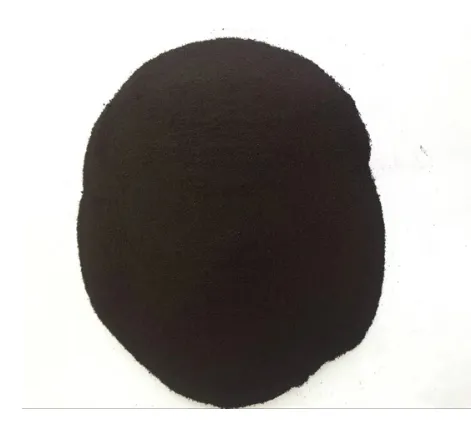
ਖ਼ਬਰਾਂ
ਮਈ . 09, 2025 11:33 ਸੂਚੀ 'ਤੇ ਵਾਪਸ ਜਾਓ
Chelating Agent: Chemical Structure and Wide Applications
ਚੇਲੇਟਿੰਗ ਏਜੰਟ, As a type of molecule capable of forming stable cyclic complexes with metal ions, it plays a crucial role in various fields such as chemistry, biology, environment, and industry. Understanding the structure, mechanism of action, and wide applications of chelating agents is crucial for understanding the development of modern chemistry and related fields.

Structurally, chelating agents are typically organic molecules
Structurally, a chelator is typically an organic molecule containing two or more coordinating atoms that can provide lone pair electrons, such as oxygen, nitrogen, sulfur, etc. These coordinating atoms can form coordination bonds with metal ions to form cyclic complexes, known as chelates. The stability of chelates is usually much higher than that of complexes formed by monodentate ligands, thanks to chelation effects. The chelation effect refers to the formation of a cyclic structure between chelating agents and metal ions, which reduces the entropy of the system and increases the stability of the complex. Common chelating agents include ethylenediaminetetraacetic acid (EDTA), citric acid, deferoxamine, ethylenediamine, cyclodextrin, etc., each of which has different coordination abilities and selectivity.
The mechanism of action of chelating agents mainly manifests in the complexation and dissolution of metal ions
By forming stable chelates with metal ions, iron chelating agents can effectively reduce the concentration of free metal ions in the solution. This mechanism of action has applications in many fields. For example, in the medical field, deferoxamine is a commonly used iron chelating agent used to treat iron overload caused by blood transfusions or genetic diseases. In the field of environment, chelating agents such as EDTA can be used to remove heavy metal pollution from soil or to prevent metal ion precipitation during water treatment processes. In the industrial field, chelating agents can be used as cleaning agents, stabilizers, and catalysts, and are widely applied in industries such as textiles, papermaking, and pharmaceuticals.
The use of chelating agents also needs to consider their potential negative impacts
Some chelating agent in soil, such as EDTA, have strong stability and environmental persistence, are difficult to biodegrade, and may lead to eutrophication of water bodies. Therefore, developing more environmentally friendly and biodegradable chelating agents is currently a hot research topic. For example, some natural chelating agents based on polysaccharides and amino acids have good biocompatibility and degradability, demonstrating great potential in environmentally friendly applications.
In short, chelation is an important chemical tool, and its unique structure and mechanism of action make it widely used in various fields. With the advancement of science and technology, research on chelating agents continues to deepen. The development of new types of chelating agents and the improvement of existing ones will further promote their greater role in environmental protection, pharmaceutical health, and industrial production. In the future, we need to pay more attention to the environmental effects of chelating agents and strive to develop more environmentally friendly, efficient, and safe chelating agents to achieve sustainable development.
Chelating Agent FAQs
What is a chelating agent?
Chelating agents are a type of chemical substance that can form stable cyclic complexes with metal ions such as Ca ² ⁺, Mg ² ⁺, Fe ³ ⁺, etc. Its molecular structure usually contains multiple coordinating atoms (such as O, N, S), which encapsulate metal ions through "clamp" binding (chelation effect), thereby changing their chemical properties.
What is the working principle of the chelating agent?
Isolate metal ions: prevent metals from participating in reactions such as scaling and catalytic oxidation.
Stable dissolved state: prevents metal ion precipitation (such as hydrolysis of Fe ³ ⁺ under alkaline conditions).
Selective binding: Different chelating agents have preferential binding ability to specific metals (such as EDTA for lead and calcium).
What are the common types of chelating agents?
Synthetic type:
EDTA (ethylenediaminetetraacetic acid): Strong but difficult to degrade, prone to heavy metal pollution.
DTPA (diethylenetriaminepentaacetic acid): It has stronger binding affinity for high valent metals such as Fe ³ ⁺.
Environmentally friendly:
IDS (Iminodosuccinic Acid): Biodegradable and a substitute for EDTA.
Citric acid: natural and non-toxic, used in food and medicine.
What are the core application areas of chelating agents?
Industrial water treatment: Softens hard water, prevents boiler scaling and corrosion.
Detergent: Combining calcium and magnesium ions to enhance stain removal ability (phosphate free formula).
Agriculture: as a carrier of trace element fertilizers (such as FeEDTA).
Medicine: heavy metal detoxifiers (such as EDTA for treating lead poisoning).
Food: Antioxidants (such as citric acid chelated with metals to delay lipid rancidity).
What is the development trend of green chelating agents?
Biodegradability: Promote biodegradable products such as IDS and GLDA (glutamic acid diacetate).
Low toxicity: Reduce the risk to the ecological environment and human body (such as banning EDTA from children's toys and cosmetics).
Intelligence: Develop pH/temperature responsive chelating agents to achieve controlled release and recovery.
-
Why Iminodisuccinic Acid Salts Are Revolutionizing Industrial Cleaning
ਖ਼ਬਰਾਂJul.28,2025
-
The Role of Polyaspartic Acid Salts in Sustainable Agriculture
ਖ਼ਬਰਾਂJul.28,2025
-
Polyaspartic Acid in Agriculture: A Revolutionary Solution for Sustainable Farming
ਖ਼ਬਰਾਂJul.28,2025
-
Iron Chelating Agents: Understanding Their Role in Treating Iron Overload Disorders
ਖ਼ਬਰਾਂJul.28,2025
-
Innovations in Gypsum retarder Retarders: From Chemical to Organic Solutions
ਖ਼ਬਰਾਂJul.28,2025
-
How Polyaspartic Acid Salts Are Replacing Toxic Industrial Chemicals
ਖ਼ਬਰਾਂJul.28,2025
